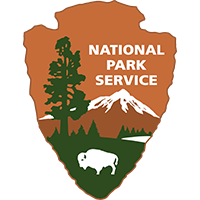National Park Service

The National Park Service (NPS) has a substantial investment in and a long history of using aerial and spaceborne remote sensing and global positioning system (GPS) technologies. The NPS Inventory & Monitoring Program conducts baseline inventories for more than 270 parks across the Nation. Remote sensing data are a critical source of information regarding geology, soils, vegetation, and infrastructure. Aerial photography and satellite imagery have been utilized to compile vegetation maps; a monumental task given the agency has responsibility for over 30 million acres. These data are particularly critical for NPS activities in Alaska, because of its remote and vast expanses of public land and the fact that the Arctic is warming rapidly in response to climate change. The NPS takes advantage of the open and freely available Landsat archive to quantify decadal changes in glacier ice cover and document land cover change in national park units. The NPS has been the Department of the Interior’s (DOI) sponsoring agency to map all large wildland and prescribed fires as part of the DOI Monitoring Trends in Burn Severity project, using the Landsat archive. GPS supports field data collection, navigation, and search and rescue operations conducted by the agency.
Website: National Park Service

